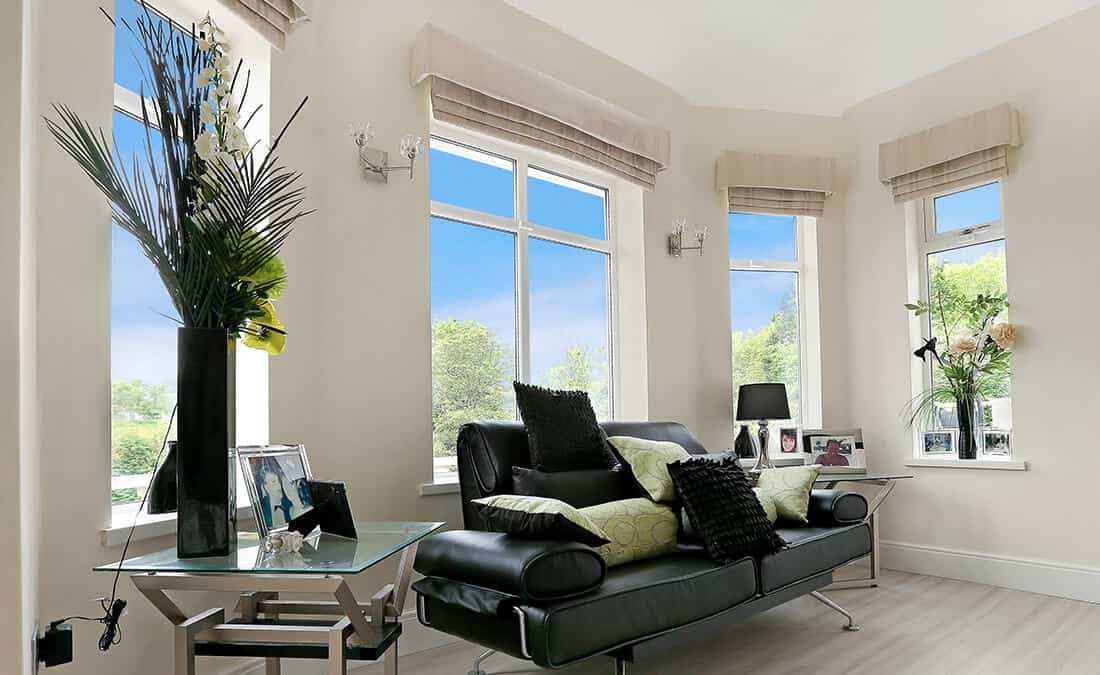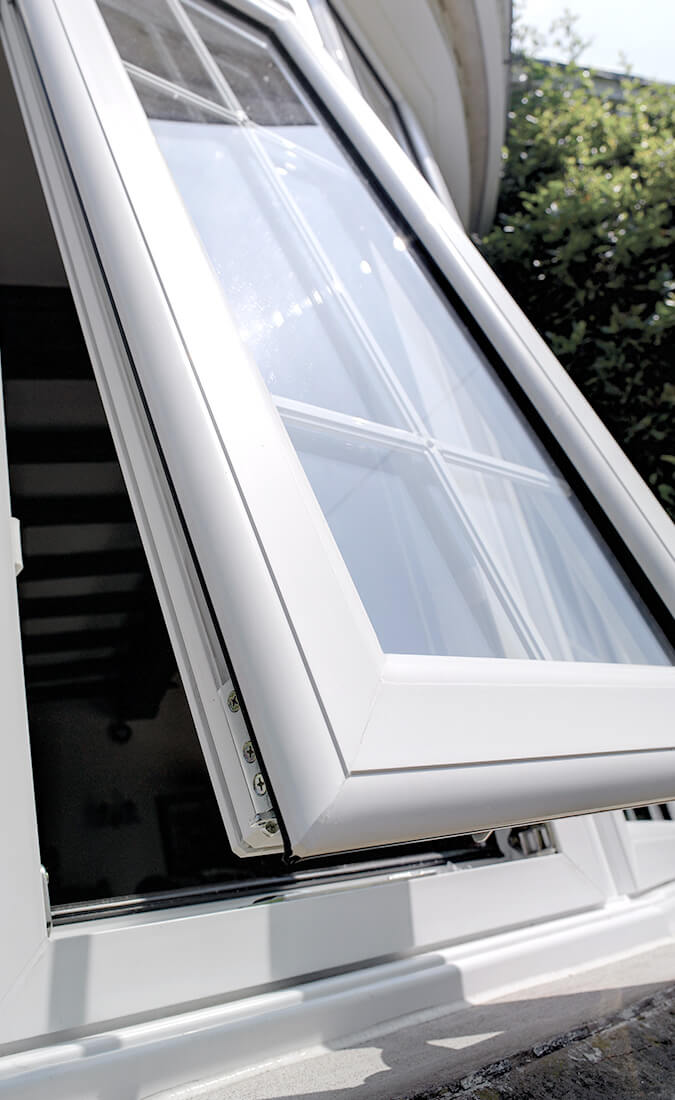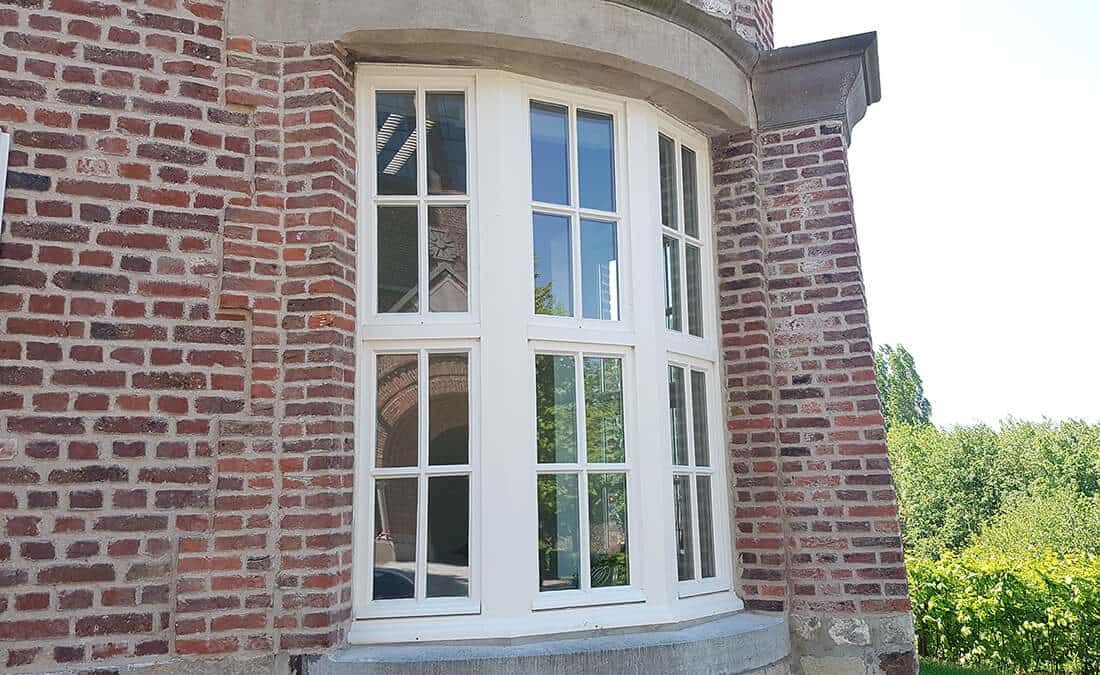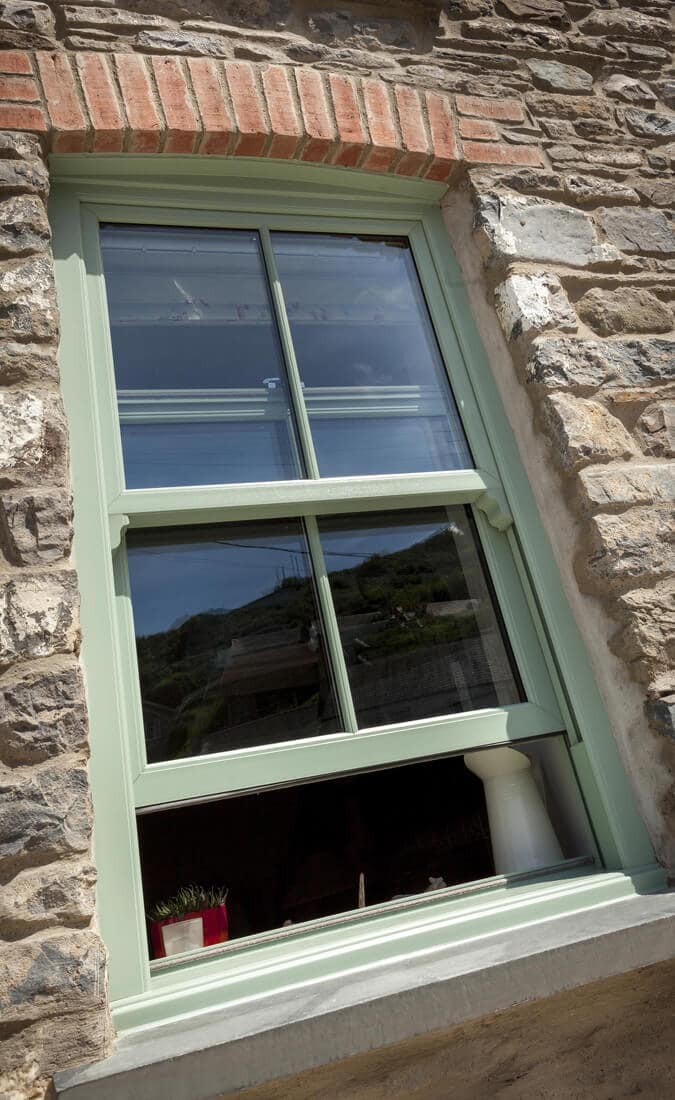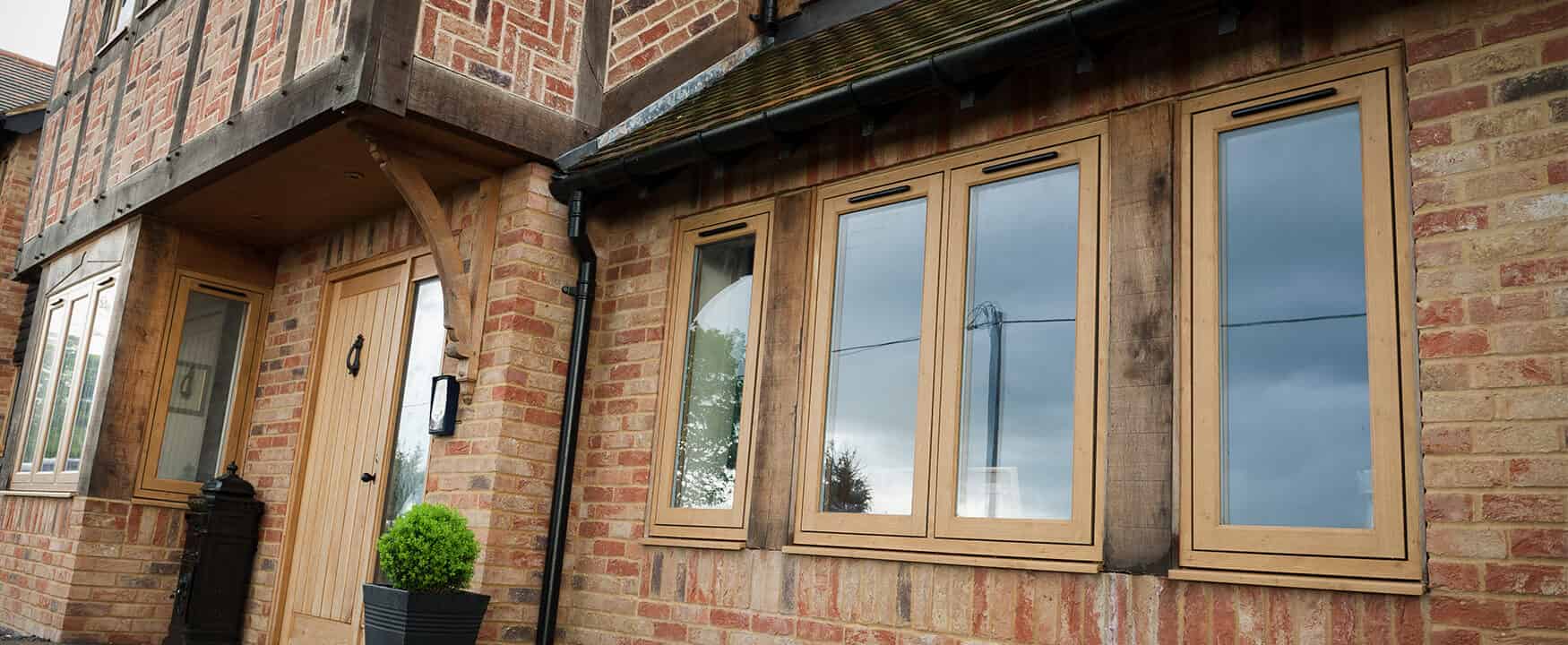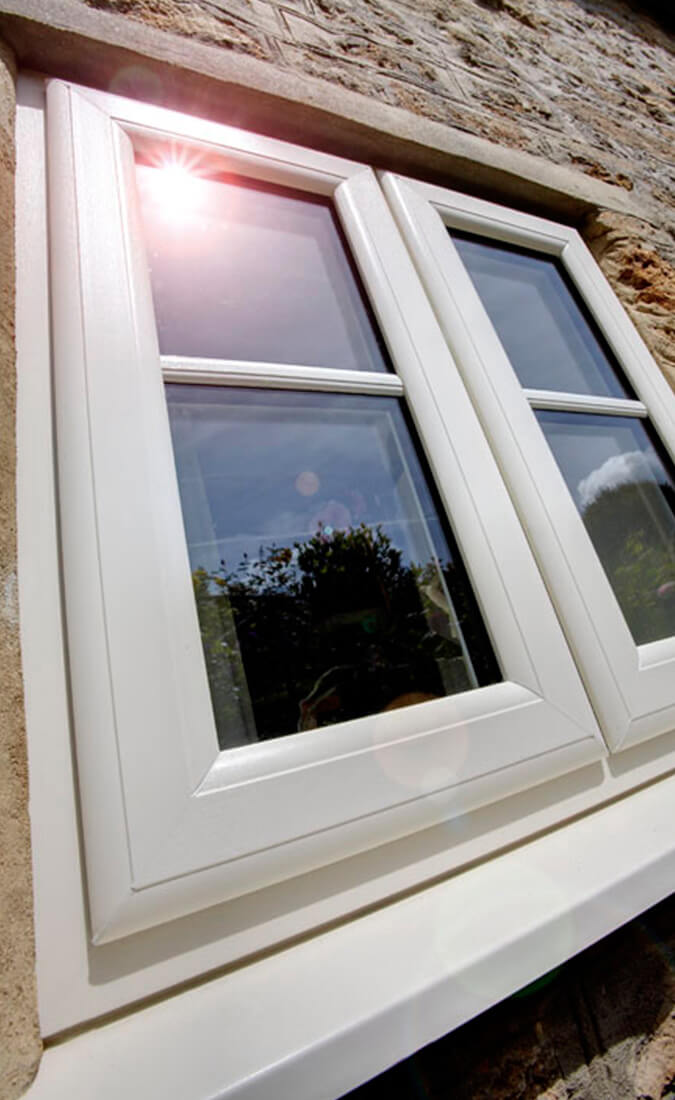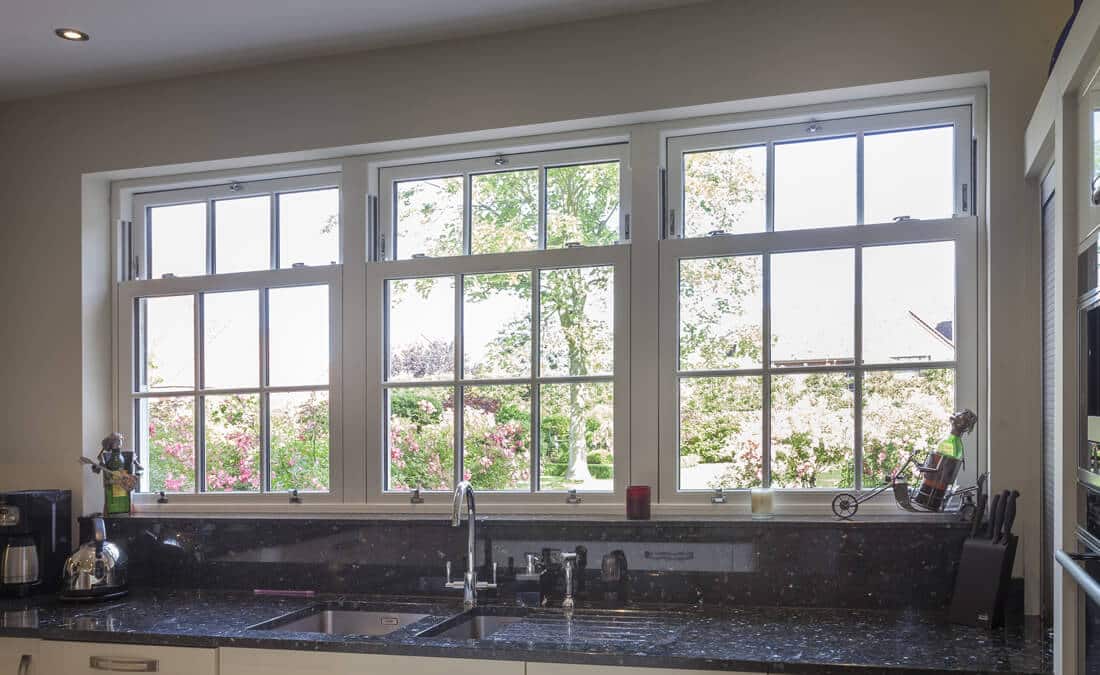What material should I choose for my new windows?
When it comes to choosing a material for your windows, we offer 3 choices: uPVC, timber effect, or aluminium. Each of these styles has different features and benefits and the material you choose will be down to your own personal preference and needs.
uPVC: As the most popular window material, uPVC is well known for its remarkable reliability, hardwearing finish and for how easy it is to keep clean. It’s also a more budget-friendly option than other window materials. We offer an eclectic mix of uPVC window styles, such as casement, sliding sash, tilt and turn, mock sash, bay, reversible, and bow windows.
Whether you live in a more traditional or contemporary home, we are sure to have the uPVC window style perfect for you. Regardless of your choice, all of our uPVC windows promise to add style, thermal performance, and security.
Timber effect: Timber frame windows are made from wood and have a more traditional look. Although they look beautiful, they require more maintenance and can be expensive. For homeowners who are considering replacement windows, we offer gorgeous timber effect frames.
Residence Collection windows are extremely stylish and designed to look like traditional wooden windows. The two windows we offer in the Residence Collection are R7 & R9 – with slightly different features, you gain the freedom to choose the windows that are most suited to your taste and requirements.
Regardless of which style you opt for, all are made from modern and high-performance uPVC, with multiple chambers within the frame. Capable of holding double and triple glazing, you and your family can gain peace of mind that your windows are keeping your home secure and warm.
Aluminium windows: Successfully able to replicate timeless timber window systems or more contemporary style windows, most commonly seen in modern buildings or offices, our Customade aluminium window profiles compliment both contemporary and traditional applications. Conserving warmth and energy effectively, this in turn reduces heat loss considerably via innovative polyamide thermal break technology. With energy efficiency firmly ingrained within their design, our Alitherm 600 aluminium windows are building regulation compliant; ideal for heritage applications. In contrast to our Alitherm 300 window system, which is more suitable for modern and new build applications.
Our Alitherm 300 window system is able to achieve a Window Energy ‘A’ rating, whereas the Alitherm 600 system can achieve a healthy ‘B’ rating. Combined with some of the lowest U-values possible, our Customade aluminium windows are able to accommodate both double and triple glazing comfortably.
Learn more
